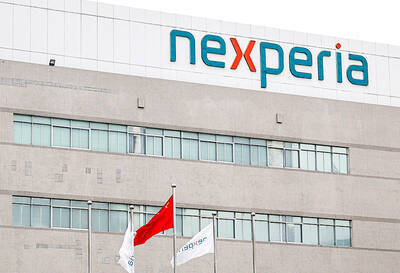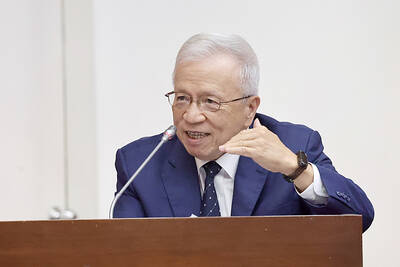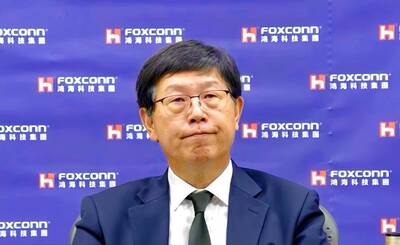Australia’s beleaguered banks are facing up to a bleaker future.
In another bad day for the industry, a scathing report released yesterday into the nation’s largest lender found a “widespread sense of complacency” from the top down blinded it to risks that led to a massive breach of money laundering laws.
Additionally, in a stark warning the good times are over for some of the world’s most profitable banks, the head of the nation’s No. 4 lender said a two-decade “golden period” is coming to an end.
The damning report into Commonwealth Bank of Australia piles further woe on an industry that has lost public and political trust amid revelations of widespread misconduct — ranging from lying to regulators to falsifying documents and taking bribes.
The outcry has crimped banks’ pricing power and emboldened regulators, threatening profit growth.
“The litany of issues facing the banks and financial services is extraordinary and dismaying,” Australian Shareholders’ Association CEO Judith Fox said. “This is the moment for the board to step up to the plate and deliver. Not just at this bank, but across all banks.”
The 109-page report found financial success “dulled the senses” at Commonwealth Bank and engendered complacency.
The report, commissioned by the Australian Prudential Regulation Authority (APRA) in the wake of the money laundering scandal, called out insular attitudes, a lack of intellectual curiosity and a pay structure that had “little sting” for senior staff if things went wrong.
“A widespread sense of complacency has run through Commonwealth Bank, from the top down,” the report said. “Commonwealth Bank turned a tin ear to external voices and community expectations about fair treatment.”
The bank has also been hit by a succession of allegations about mistreating customers, from giving poor financial advice to failing to honor insurance claims.
The report was critical of the tardy response to such issues, saying that a “slow, legalistic and reactive, at times dismissive, culture also characterized many of Commonwealth Bank’s dealings with regulators.”
In the only financial sanction, the APRA has applied a A$1 billion (US$751.7 million) add-on to Commonwealth Bank’s minimum capital requirements.
“My job is to fix what is broken and do what is necessary to earn back trust,” Commonwealth Bank CEO Matt Comyn said, as the lender promised to implement all 35 of the report’s recommendations. “It’s certainly a challenging environment in banking at the moment.”
Comyn, who replaced Ian Narev last month, has already been dealing with the fallout from a separate widespread inquiry into financial system misconduct that has swept up the other banks and seen the CEO and chairman of wealth manager AMP Ltd resign.
“The pressure will not relent until there is demonstrable evidence that Commonwealth Bank has turned the culture around,” said Daniel Smith, Australian head of CGI Glass Lewis, a governance analysis and proxy voting firm. “Whilst the report is targeting Commonwealth Bank, the other major banks will do well to heed the comments and look themselves in the mirror.”
The damage from the scandals plaguing the industry was recognized by Australia and New Zealand Banking Group Ltd (ANZ) CEO Shayne Elliott.
“Our sector has had a golden period for 20-plus years and we don’t think that’s going to continue,” Elliott said yesterday, after the bank posted a small increase in first-half profit. “I imagine there will be lots of changes that ourselves and other participants will make.”
Patience among investors with bad behavior is also running out.
“Companies that fail to grasp the importance of managing nonfinancial risks learn the hard way that these factors lie at the heart of their sustainability,” said Louise Davidson, CEO of the Australian Council of Superannuation Investors, whose members collectively manage A$2.2 trillion in assets.
Australian Treasurer Scott Morrison, who had previously opposed setting up the inquiry into the banks, joined the chorus of criticism, saying that the “rap sheet from APRA is very damning.”
“This should be a wake-up call for every board member in the country, particularly those who are the custodians of the savings and share holdings of millions of Australians,” Morrison said. “They have been let down, terribly.”
Shares of the big four lenders rose yesterday, led by ANZ’s 2.4 percent gain and Commonwealth Bank’s 1.9 percent rally.
Banks have traded at or near 52-week lows, making their dividend yields attractive, said Sean Fenton, director at Sydney-based Tribeca Investment Partners, which manages about A$2.5 billion.
“There’s certainly valuation support there,” he said.

JITTERS: Nexperia has a 20 percent market share for chips powering simpler features such as window controls, and changing supply chains could take years European carmakers are looking into ways to scratch components made with parts from China, spooked by deepening geopolitical spats playing out through chipmaker Nexperia BV and Beijing’s export controls on rare earths. To protect operations from trade ructions, several automakers are pushing major suppliers to find permanent alternatives to Chinese semiconductors, people familiar with the matter said. The industry is considering broader changes to its supply chain to adapt to shifting geopolitics, Europe’s main suppliers lobby CLEPA head Matthias Zink said. “We had some indications already — questions like: ‘How can you supply me without this dependency on China?’” Zink, who also

At least US$50 million for the freedom of an Emirati sheikh: That is the king’s ransom paid two weeks ago to militants linked to al-Qaeda who are pushing to topple the Malian government and impose Islamic law. Alongside a crippling fuel blockade, the Group for the Support of Islam and Muslims (JNIM) has made kidnapping wealthy foreigners for a ransom a pillar of its strategy of “economic jihad.” Its goal: Oust the junta, which has struggled to contain Mali’s decade-long insurgency since taking power following back-to-back coups in 2020 and 2021, by scaring away investors and paralyzing the west African country’s economy.

BUST FEARS: While a KMT legislator asked if an AI bubble could affect Taiwan, the DGBAS minister said the sector appears on track to continue growing The local property market has cooled down moderately following a series of credit control measures designed to contain speculation, the central bank said yesterday, while remaining tight-lipped about potential rule relaxations. Lawmakers in a meeting of the legislature’s Finance Committee voiced concerns to central bank officials that the credit control measures have adversely affected the government’s tax income and small and medium-sized property developers, with limited positive effects. Housing prices have been climbing since 2016, even when the central bank imposed its first set of control measures in 2020, Chinese Nationalist Party (KMT) Legislator Lo Ting-wei (羅廷瑋) said. “Since the second half of

AI BOOST: Next year, the cloud and networking product business is expected to remain a key revenue pillar for the company, Hon Hai chairman Young Liu said Manufacturing giant Hon Hai Precision Industry Co (鴻海精密) yesterday posted its best third-quarter profit in the company’s history, backed by strong demand for artificial intelligence (AI) servers. Net profit expanded 17 percent annually to NT$57.67 billion (US$1.86 billion) from NT$44.36 billion, the company said. On a quarterly basis, net profit soared 30 percent from NT$44.36 billion, it said. Hon Hai, which is Apple Inc’s primary iPhone assembler and makes servers powered by Nvidia Corp’s AI accelerators, said earnings per share expanded to NT$4.15 from NT$3.55 a year earlier and NT$3.19 in the second quarter. Gross margin improved to 6.35 percent,